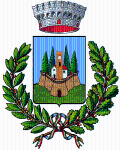Descrizione
Una località di Sexta “dove già vi fu un castello” è citata nel 1079 in un documento dei canonici senesi; è difficile comprendere se si tratti o meno del Villaggio poi Santa Maria a Sesta e oggi Villa a Sesta distante almeno mille metri, oppure del luogo attuale.
La prima notizia certa del castello di Sesta è del 1177 e proviene dal Cartulario della Berardenga, che menziona un atto rogato proprio nel “Castello de Sexta”.
All’inizio del XIII secolo è fra i castelli obbligati a pagare una multa per il mancato rispetto di impegni assunti con Siena. Non risultano menzioni nel catasto del 1320, mentre è presente come toponimo nel Vicariato della Berardenga promosso da Siena nel 1337-1339.
In quegli anni Sesta era proprietà della famiglia “fiorentina” degli Ubaldini e solo nel 1388 venne venduto al Comune di Siena per 900 fiorini d’oro.
Da quel momento la fortezza sarebbe divenuta un’importante baluardo confinario senese, al punto che, nei primi anni del quattrocento gli unici casseri sul confine con lo stato di Firenze erano Sesta, Monteriggioni e Casole; tuttavia il controllo, affidato anche militarmente alla popolazione residente, non dette i risultati sperati: spopolamento e conseguente degrado strutturale, crearono insicurezza e convinsero i senesi a potenziare le difese del cassero.
Nel 1485 Sesta venne posta sotto il diretto controllo del Concistoro e dei Quattro di Biccherna e nel 1491 vennero ingaggiati importanti personaggi dell’epoca, fra cui il celebre ingegnere Francesco di Giorgio Martini per la concreta esecuzione delle fortificazioni e così fino alla metà del cinquecento Sesta rappresentò un importante presidio di frontiera.
Per altri testi, Sesta sarebbe stata abbandonata nel 1527 a seguito di un attacco dei senesi e recuperata sulle sue rovine solo alla fine del XVIII secolo.
Nel 1676, secondo la relazione Gherardini, e anche nel 1692, Sesta era un podere di proprietà Fortunio Cinughi posto nel comunello di Villa a Sesta e Rosennano, mentre al catasto leopoldino e con la proprietà Valenti, appare simile ad oggi, compresa la parata interna sorretta da colonne cilindriche in pietra e la torre esterna diruta. Di epoca successiva sono l’apertura di alcune finestre ed il rifacimento delle coperture.
Per i testi architettonici, la maggior parte delle strutture murarie sono collocabili attorno al XIII secolo e sono riconoscibili gli interventi quattrocenteschi. Sesta è un toponimo di origine Latina.
English version:
A place called Sexta, “where there was already a castle,” is mentioned in a Sienese canonical document from 1079; it is difficult to know whether or not it indicated the village later called Santa Maria a Sesta and today Villa a Sesta, about a thousand meters away, or the current locality.
The earliest certain documentation of Sesta dates to the 1177 Berardenga Cartulary, which mentions a deed drawn up at “Castello de Sexta”.
At the beginning of the 13th century, it was one of the castles obliged to pay a fine for failing to respect commitments it had with Siena. It was not mentioned in the 1320 land registry, but the place name is found as part of the Vicariate of Berardenga as established by Siena in 1337-1339.
In that period, Sesta was owned by the “Florentine” Ubaldini family, and only in 1388 was sold to the Municipality of Siena for 900 gold florins.
From that year on, the fortress became an important boundary bulwark for Siena, to the point that in the early years of the 15th century, the only fortresses along the border with the Florentine state were Sesta, Monteriggioni and Casole. However, its control activities, including military functions, which were entrusted to the resident population, were not as Siena hoped: depopulation and the consequent deterioration of the structure generated insecurity and convinced the Sienese to further strengthen the fortress' defenses.
In 1485 Sesta was placed under the direct control of the Concistory and of the members of the Biccherna (chancellery of finance) of Siena, and in 1491 important figures of the day – like the famed engineer Francesco di Giorgio Martini – were hired to carry out the fortifications, so by the middle of the 16th century, Sesta was an important border garrison.
Per altri testi, Sesta sarebbe stata abbandonata nel Other texts indicate that Sesta was abandoned in 1527 following an attack by the Sienese, and not rebuilt atop the ruins until the end of the 18th century.
In 1676, according to the Gherardini report, and in 1692 as well, Sesta was a farm owned by Fortunio Cinughi in the common of Villa a Sesta and Rosennano, while in the Leopoldine land registry, indicating Valenti as the owner, the property appears similar to today, including the interior wall supported by cylindrical stone columns and the ruins of the external tower. The addition of a few windows and the renovation of the roofs took place in a later era.
Architectural sources show that most of the wall structures date to around the 13th century and appear to pertain to works from that century. The place name Sesta is of Latin origin.
Modalità d'accesso
Privato
Indirizzo
Punti di contatto
Ultimo aggiornamento: 14 settembre 2024, 16:22

